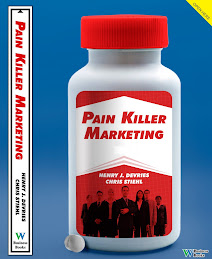Emanuel Rosen wrote, “The more connected your customers are to each other, the more you depend on their ‘buzz’ for future business.” (The Anatomy of Buzz, Doubleday, New York, 2000.)
Would you like to use your pain of customer research to fill your pipeline with qualified prospects? Here is a three-step approach that works wonders:
1. Identify Target Prospects. Step one is to find a potential market niche that will be profitable. In today’s market, customers demand specialists. You want fewer prospects to be interested in you, but much more intensely interested. This requires focus. It doesn't mean you'll turn down a customer who doesn't fit into your two or three chosen verticals--it simply means you won't be actively shaping your marketing campaigns toward them. Evaluate your business. Have you sold most of your services to golf-ball manufacturers, pet stores, and electrical suppliers? Then THOSE are the three places to start thinking. But if pet stores in general don't have the budget for your services, you'll need to look harder.
2. Prove You Understand Their Pain. Step two is to determine what promise you or your firm is making to your target market. This includes your unique selling proposition: what you do, who you do it for and how you are unlike competitors—all in 25 words or less. What measurable results do you obtain for customers? You need to decide what makes you different than everybody else, and you need to overcome fear of focus--the desire to want to be everything to everybody. People hire companies who specialize. Very few people would hire a surgeon who says he can do everything from tonsillectomies to facelifts and open-heart procedures. When you're in pain, you want a specialist--not just somebody who's "good with a knife."
3. Harvest Emails on Your Web Site. Step three is to create an easy-to-update Web site that demonstrates your competence, rather than asserts how great you are. The home page of the Web site should have a headline that makes it clear who your target is and what pains you solve. The Web site is the cornerstone of your marketing, and must not be a mere electronic brochure. Your Web site is the silent salesperson that prospective customers visit before making the decision to grant you permission to meet. There should be plenty of free articles with great how to advice for prospects. The Web site should include an offer often something free like an e-book in exchange for the visitor’s e-mail address. This e-book should contain valuable information that tells prospects how to solve their problem in general. Then e-mail these prospects special offers that address their pain.
Saturday, January 5, 2008
Subscribe to:
Posts (Atom)

